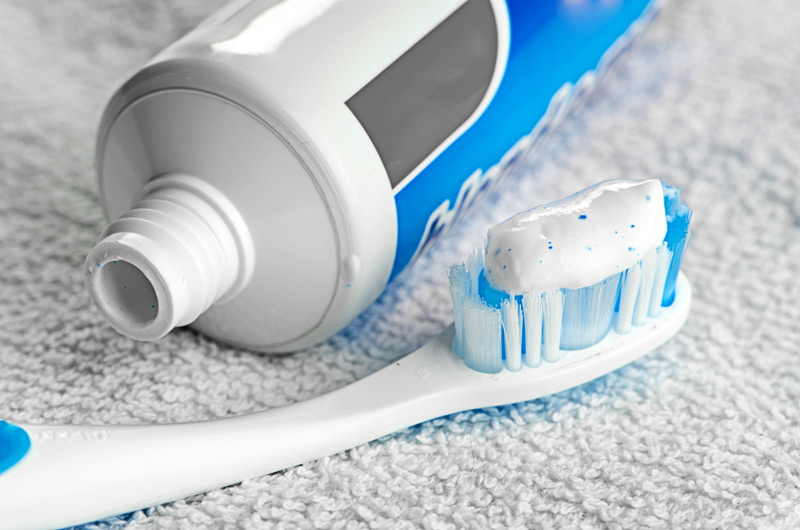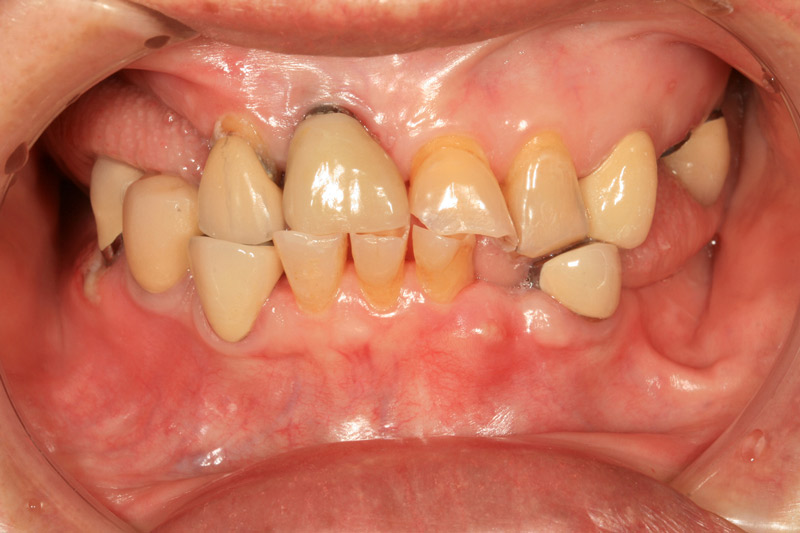Does Toothpaste for Gum Disease Work?
 Periodontal disease or gum disease works in the same way that most infections work. If left untreated it can worsen but when particular steps are followed, or certain medication is taken, the symptoms will clear up and the body can start to heal. It is crucial for gum disease to be tackled as soon as possible because if left to fester it can cause irreparable damage to the teeth and gums. Unfortunately, there is no quick fix for gum disease, but there are a lot of questions as to whether or not toothpaste can play a part in fighting and preventing it.
Periodontal disease or gum disease works in the same way that most infections work. If left untreated it can worsen but when particular steps are followed, or certain medication is taken, the symptoms will clear up and the body can start to heal. It is crucial for gum disease to be tackled as soon as possible because if left to fester it can cause irreparable damage to the teeth and gums. Unfortunately, there is no quick fix for gum disease, but there are a lot of questions as to whether or not toothpaste can play a part in fighting and preventing it.
What Is Gum Disease?
First, gum disease is extremely common. This is mostly because of the sugary and acidic diets that so many of us are used to. It is widely reported that over half of the adult American population will experience gum disease at some point in their life so try not to avoid the situation if you suspect that you have gum disease. The quicker that gum disease is caught, the easier it will be to treat. Though it can be caused by a build-up of plaque or tartar or even receding gums, there are generally two types of gum disease: gingivitis and periodontitis. One typically leads to the other when the disease has advanced due to lack of treatment.
Gingivitis
This form of gum disease is generally the first stage. It is caused by a build-up of bacteria and sometimes plaque. The symptoms of plaque and gingivitis will likely include sore and inflamed gums as well as noticeable bleeding when brushing the teeth. At this point, the disease is relatively easy to treat, and it’s unlikely that any damage to bone or tissue has occurred. If left untreated the symptoms may intensify and there will be a higher chance of irreversible damage. In severe cases, the disease may develop into periodontitis.
Periodontitis

It is true that gum disease is the top reason for tooth loss in adults and unfortunately killing the disease takes time. That is not to say that it can’t be treated though, with numerous remedies available such as coconut oil, tea tree oil, and baking soda to help reduce gum disease and improve oral care.
Toothpaste for Gum Disease
There is a huge variety of toothpaste on the market and the ingredients in them all vary. The most common and active ingredient in a toothpaste fit for fighting gum disease is stannous fluoride. It is, of course, a type of fluoride which is also a mineral and has a high antibacterial profile. You may be familiar with fluoride as most toothpaste contains sodium fluoride and although this is perfect for brushing the teeth, it is nowhere near as effective as toothpaste containing stannous fluoride for fighting gum disease. Before choosing a toothpaste, it is always advisable to consult with your dentist as even fluoride toothpaste has its drawbacks. The main one being that teeth can become more susceptible to stains after using the toothpaste. For those with gingivitis who aren’t keen on using a stannous fluoride-based toothpaste, there are fluoride-free types available that can still aide in the fight with gum disease. Before hunting for fluoride-free toothpaste, just ensure that it will be sufficient enough for the type of gum disease that you have. Severe cases of periodontitis will probably require the need for prescription toothpaste. As you can imagine, prescription toothpaste tends to be very strong and so there will be a usage guide to follow.
So, Does Toothpaste Work?
Getting back to the question raised at the beginning of this post, toothpaste most definitely does work for gum disease. However, with the wide range of toothpaste on the market and the individual specifics of everyone’s teeth, using the right toothpaste will make all the difference. People suffering from a severe case of periodontitis may see little to no difference when trying to use a stannous fluoride-based toothpaste. In such a case, consult with your dentist will definitely shed some light as to which product to look out for so that the gum disease can be treated as soon as possible. There are also several specialized types of mouthwash available specifically for targeting gum disease. Again, a dentist will be able to offer more information on these products if it is something you want to look into.
Fighting Gum Disease
The trick to fighting gum disease is to eliminate the harmful bacteria which is done gradually and with a vigorous oral hygiene routine. Regular dentist visits are imperative when dealing with gum disease especially for those who suffer from periodontitis. On top of your personal religious oral hygiene routine, a dentist will be able to inspect every angle of the mouth and ensure that any air pockets aren’t collecting debris. If undoable damage has occurred, your dentist will be able to advise you on the treatment options available and provide some steps to follow to prevent the gum disease from returning again.
With gum disease being so common, it is always a good idea to be vigilant when it comes to your teeth. If you notice a couple of white spots on the teeth, this could be an indication of mineral loss. This is one of the earliest signs of gum disease but is incredibly easy to treat if it is picked up. A loss of minerals from the tooth can be restored with a careful diet and a strong oral hygiene regime.
Relate Posts to Read:
Best Toothpaste for Bad Breath
Gum Infection Home Remedies: Reduce Swelling and Pain at Home
